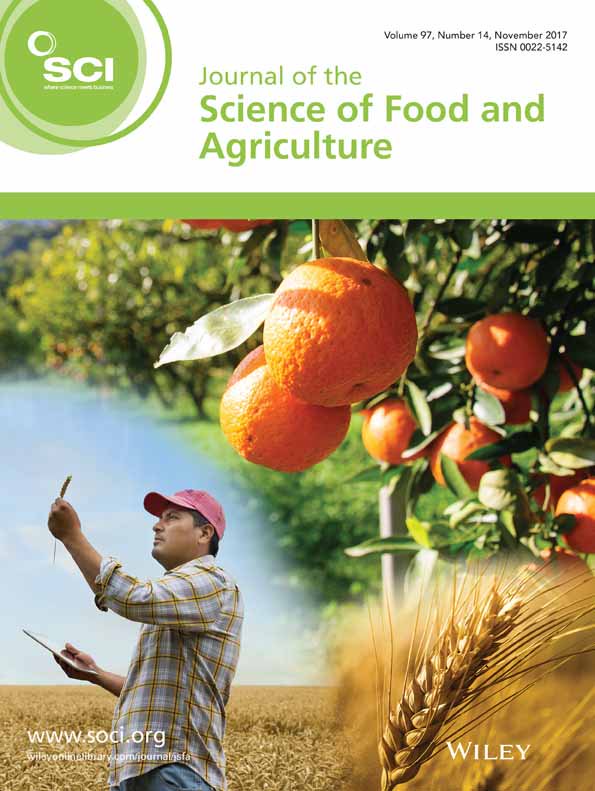Ver ítem
- xmlui.general.dspace_homeCentros Regionales y EEAsCentro Regional Tucumán - Santiago del EsteroEEA Santiago del EsteroArtículos científicosxmlui.ArtifactBrowser.ItemViewer.trail
- Inicio
- Centros Regionales y EEAs
- Centro Regional Tucumán - Santiago del Estero
- EEA Santiago del Estero
- Artículos científicos
- Ver ítem
Exploring the biological activity of condensed tannins and nutritional value of tree and shrub leaves from native species of the Argentinean Dry Chaco
Resumen
BACKGROUND: Tropical tree or shrub leaves are an important source of nutrients for ruminants and a potential source of
biologically active compounds that may affect ruminalmetabolism of nutrients. Therefore, eightwoody species fromthe native
flora ofArgentinean Dry Chaco, rich in secondary compounds such as condensed tannins (CT),were assessed for their nutritional
value, CT fractions and in vitro true digestibility of dry matter, as well as biological
[ver mas...]
BACKGROUND: Tropical tree or shrub leaves are an important source of nutrients for ruminants and a potential source of
biologically active compounds that may affect ruminalmetabolism of nutrients. Therefore, eightwoody species fromthe native
flora ofArgentinean Dry Chaco, rich in secondary compounds such as condensed tannins (CT),were assessed for their nutritional
value, CT fractions and in vitro true digestibility of dry matter, as well as biological activity (BA).
RESULTS: Differencesamongspecieswere foundin contents of total phenol, protein-precipitating phenols (PPP),boundproteins
to PPP (BP) and BP/PPP (P<0.0001). The BP/PPP ratio reveals differences among species in potential BA as indicated by protein
precipitation. The major CT of each species were isolated and purified for use as a standard. Although Schinopsis balansae had
themost (P≤0.05) total CT (19.59% DM), Caesalpinia paraguariensis had greater (P≤0.05) BA with themost PPP (530.21% dry
matter). Larrea divaricata, at 0.97, followed by Acacia aroma, at 0.89, had CT with the highest (P≤0.05) BP/PPP ratios, followed
by Prosopis alba (0.59).
CONCLUSION: There were differences in nutritive value and bioactivity among species. Those with the greatest CT were not
necessarily thosewith the most BA. Caesalpinia paraguariensis, S. balansae and L. divaricatawere themost promising species as
native forage CT sources. Cercidiurm praecox (20.87% CP; 18.14% acid detergent fiber) and Prosopis nigra (19.00% CP; 27.96%
acid detergent fiber) showed the best (P≤0.05) nutritive values. According to their nutritive traits, these species might be
complementary in grass-based ruminant diets.
[Cerrar]

Autor
García, Elisa Mariana;
Cherry, Nicole;
Lambert, Barry D.;
Muir, James P.;
Nazareno, Mónica Azucena;
Arroquy, Jose Ignacio;
Fuente
Journal of the science of food and agriculture 97 (14) : 5021–5027. (November 2017)
Fecha
2017
ISSN
1097-0010
Formato
pdf
Tipo de documento
artículo
Palabras Claves
Derechos de acceso
Restringido
 Excepto donde se diga explicitamente, este item se publica bajo la siguiente descripción: Creative Commons Attribution-NonCommercial-ShareAlike 2.5 Unported (CC BY-NC-SA 2.5)
Excepto donde se diga explicitamente, este item se publica bajo la siguiente descripción: Creative Commons Attribution-NonCommercial-ShareAlike 2.5 Unported (CC BY-NC-SA 2.5)

